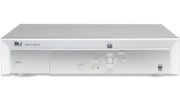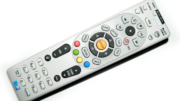Maybe. Possibly. Possibly not. Well, when an article starts like that, you have to wonder what you’re going to get. But to quote one of my favorite puppets, “Always in motion is the future.” DIRECTV’s latest satellite went up in the sky last month and it will be live in the next few months if all the tests go well.
One thing that is sure is that when it does go live, you won’t notice and you certainly won’t need a new dish right away. DIRECTV is constantly moving channels from satellite to satellite, and from transponder to transponder within the same satellite. Your system automatically adapts without even a blip showing up in your live TV experience. That’s what will happen here… DIRECTV-14 will take some of the load off the older satellites seamlessly and silently.
But… what about the future? 4K programming is coming, and best case scenario each 4K channel will take 2-3 times the amount of bandwidth that HD takes now. Depending on DIRECTV’s desires and the technology they use, it could be more like 6-8 times the amount of bandwidth. Even putting two new satellites in the sky may not be enough because there are only so many frequencies that can be used. That’s why DIRECTV is investing in so-called “Reverse DBS” technology. Reverse DBS uses the frequencies that are normally reserved for sending stuff up to the satellite, but it uses them to pull information down. It’s well known from FCC filings that DIRECTV-14 has the ability to use Reverse DBS and DIRECTV’s received some early approvals for the technology.
Eventually, if Reverse DBS is approved for use in homes, it’s likely you’ll need a new dish and possibly even new receivers, depending on how old yours are. That’s still a ways off, though. DIRECTV will be experimenting with Reverse DBS throughout 2015, and if they do roll the technology out, it will be extremely slow. Old-timers will tell you that when DIRECTV rolled out its MPEG-4, Ka-band technology in the mid-2000s, it took several years. You could even argue that they’re not done yet, since DIRECTV still supports standard-definition from its original satellite location and will do so for years to come.
DIRECTV isn’t going to abandon its millions of viewers, nor are they going to spend billions of dollars swapping out dishes. Looking to the past for guidance, RDBS technology will probably be used sparingly and only for the highest-tech, newest receivers initially. It will probably take ten years or more before everyone needs a new dish, and that gives plenty of time for existing equipment to simply wear out in the normal course of things.
Of course our avid Solid Signal Blog readers are early adopters, and if there is a new dish and new receiver that’s required, you’ll want it right away and we’ll make it available to you. That’s still probably 9-12 months down the road, once DIRECTV finishes all its testing.





